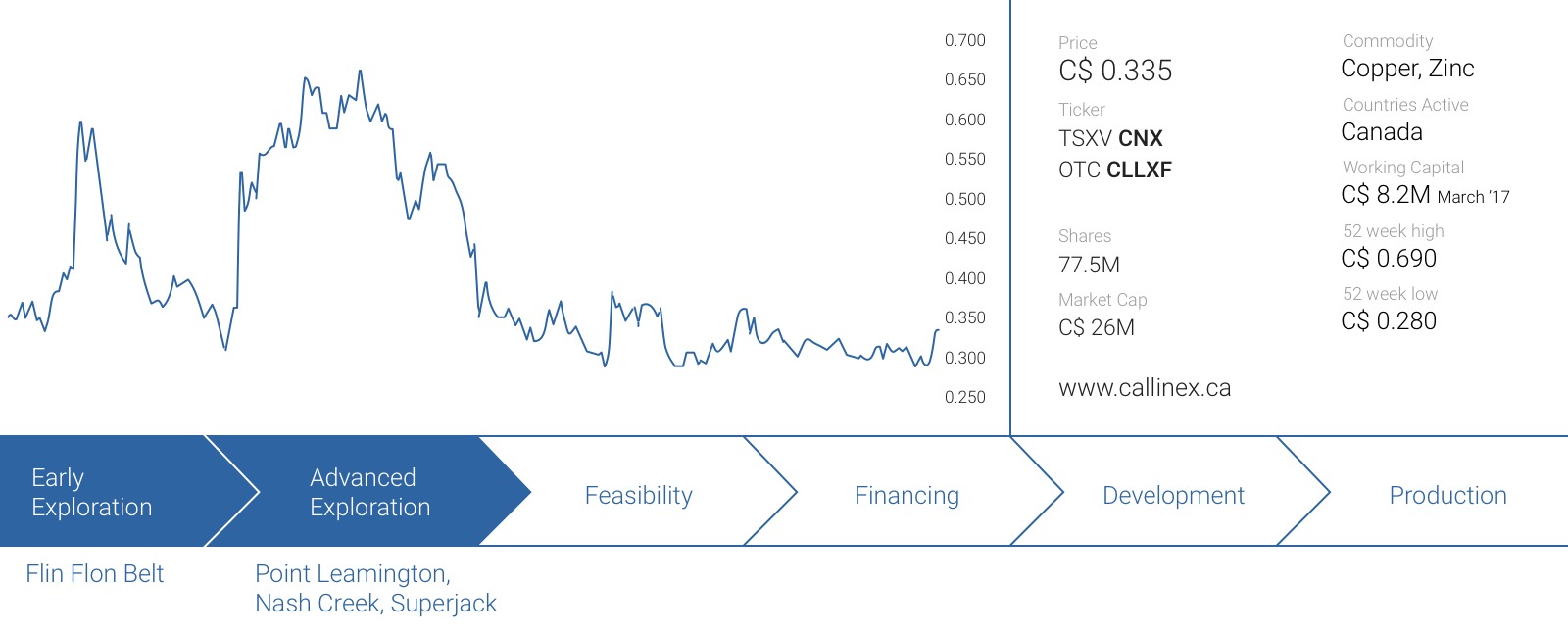Last year, we reported on Callinex Mines’ (CNX.V) acquisition of three primary zinc deposits in Eastern Canada. At the time, Callinex wanted to make a major foray into the zinc space with the metal then trading around $0.70 to $0.80 per pound. The company also wanted to leverage its VMS-focused technical team to establish a presence in a second prolific VMS district in the Bathurst camp.
Now the zinc price has increased by 60% in just 12 months, Callinex is focused on exploration and project development of two of the key acquisition targets – the Nash Creek and Superjack VMS Projects in New Brunswick.
The Company also acquired the 14.1 Mt Point Leamington VMS project in Newfoundland, but it seems to have taken a back seat to exploration efforts in the Flin Flon district of Manitoba and the Bathurst district of New Brunswick. With the Bathurst drilling program now in full swing, we wanted to take a closer look at these projects and what we expect from this exploration season.
Callinex just released initial drill results in what should be a busy news flow period over the next four to six months.
This year’s drill program at Nash Creek will focus on expansion potential
Callinex’ is delivering on its promise to complete up to 10,000 meters of drilling in the Bathurst mining camp with a special focus on the Nash Creek and Superjack projects, both located within trucking distance to an operating mill and smelter.
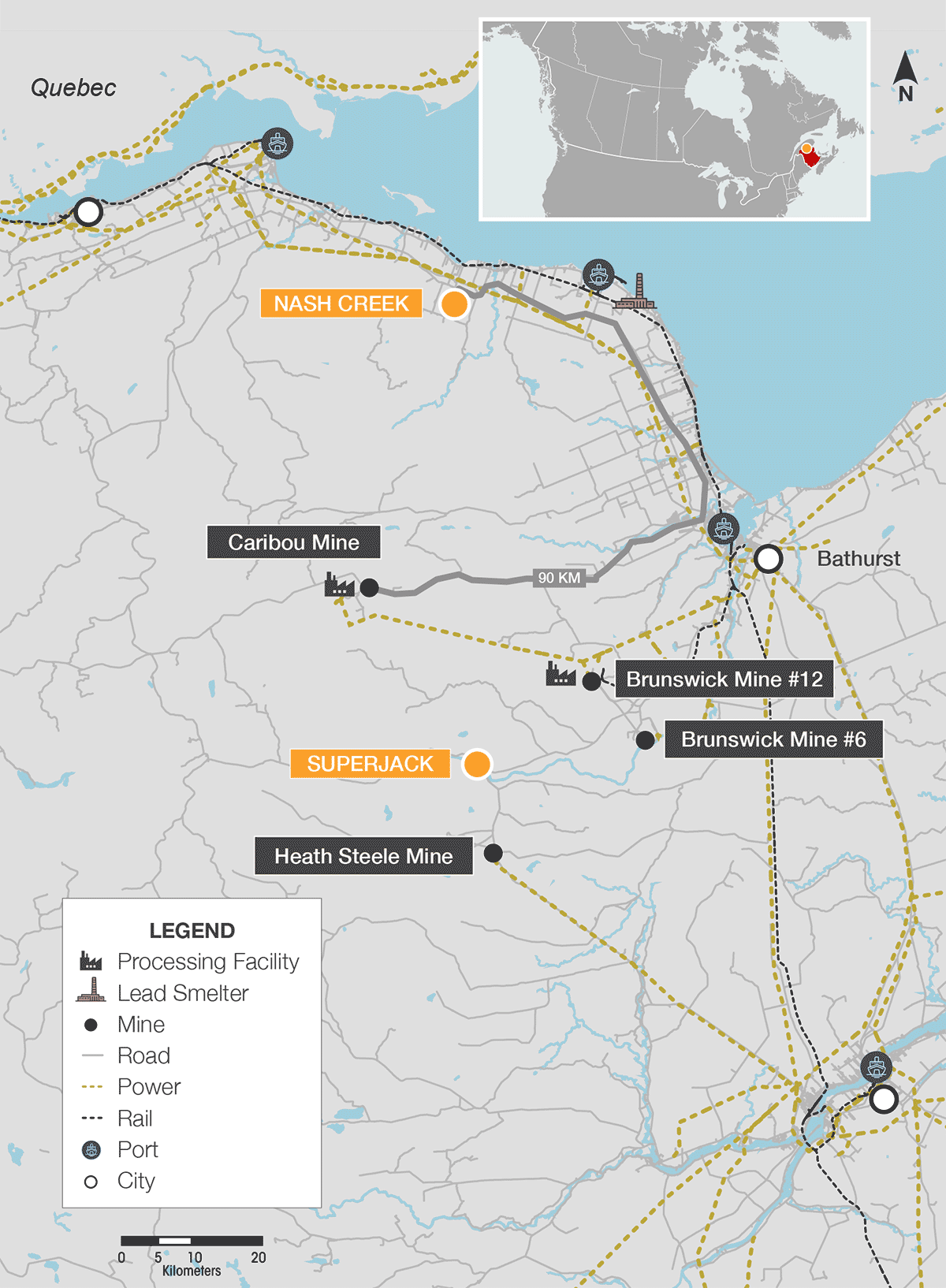
The Nash Creek Project is one of the largest unmined deposits in the Bathurst camp and more of a recent discovery with the majority of drilling having occurred from 2005 to 2011. The project consists of a 10.2 Mt containing approximately 800 million pounds of zinc equivalent mineralization at or near surface.
The deposit is still open for expansion, and whilst the average grade of 3.6% ZnEq is quite low, the project benefits from great metallurgy and infrastructure with a highway and powerlines traversing the property along with nearby proximity to a smelter.
The first phase of its 10,000 meter drill program Nash Creek Project recently ended after completing 24 holes for a total of 4,622 meters. The total amount of meters drilled were right in the middle of Callinex’ original guidance (20-30 drill holes for a total of 3,500-6,000 meters of drilling). The primary objective of this first drill program at Nash Creek was to find out whether mineralization extends beyond the mineral resource to the north. Previous operators had not conducted any significant exploration in this area despite untested IP targets along a 2.5km soil anomaly and mineralization that remained open to the north.
As you can see on the next image, most of the drill holes were completed to the north of the known resource. These initial holes were drilled on a relatively wide spacing and so we anticipate that Callinex would need to conduct additional drilling before they can update resource estimate in advance of a Preliminary Economic Assessment scheduled for Q1, 2018. Results from the first two holes to test this area suggest the deposit may extend much further north than previously thought.
Once Callinex receives additional results from the 10 holes drilled around these recent intersections (NC17-224 and NC-226), we should know how extensive the zone and then a simple infill drill program could be conducted to upgrade the mineralization to a resource status.
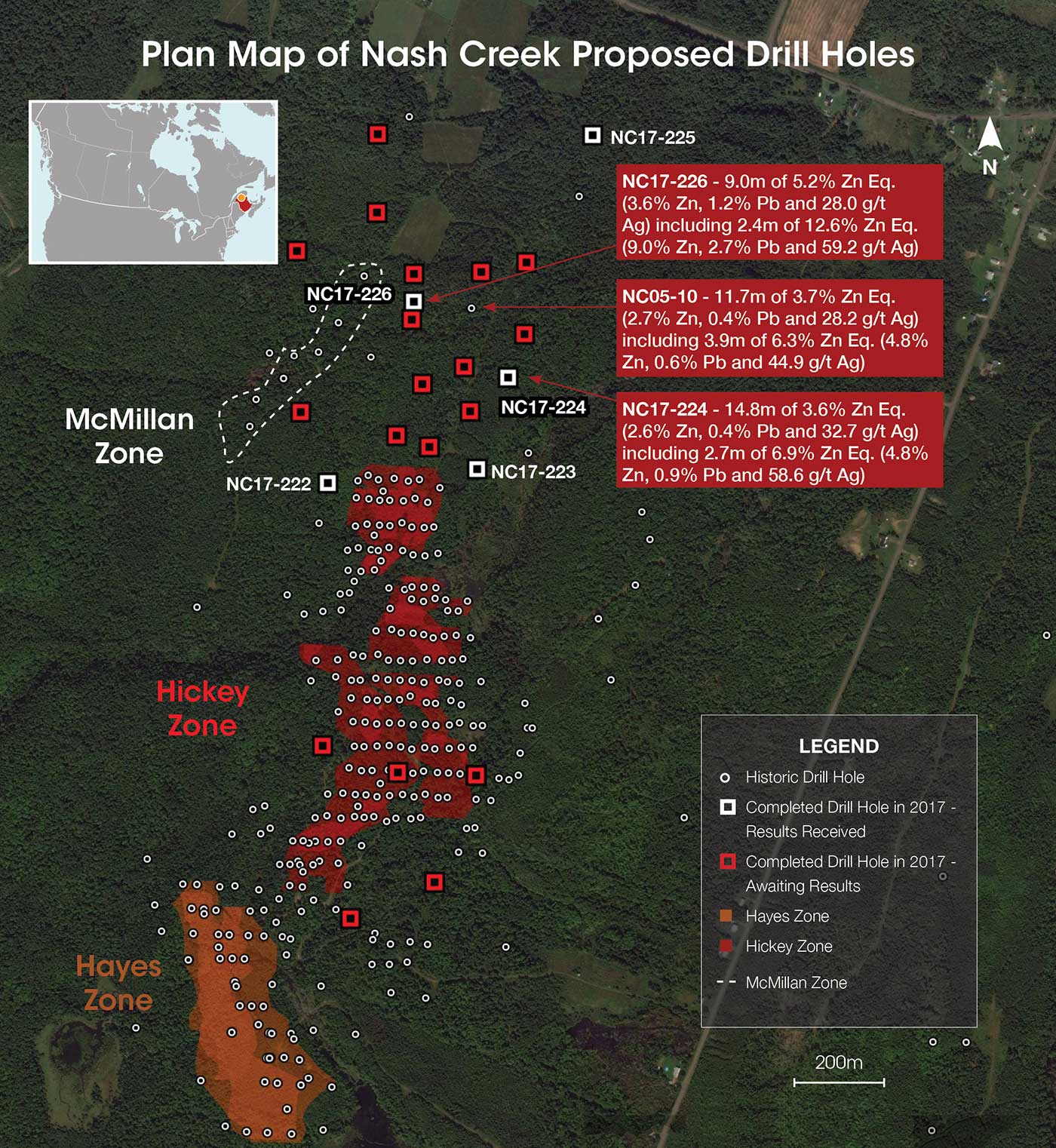
As you can see, the northern holes will focus on an area of 500 by 400 meters and this could easily add 4-6 million tonnes to the total resource estimate of 10.2 million tonnes at Nash Creek and likely make the project large enough for a standalone operation at current prices.
About last week’s drill results
Last week, Callinex reported the assay results from the first five holes at Nash Creek and whilst one hole returned empty and two other holes only showed narrow intervals, hole 224 and 226 were really intriguing.
In hole 224, Callinex’ drill bit intersected several layers of mineralization with for instance 14.8 meters at 3.63% ZnEq within a wider interval of 26.4 meters at 2.48% Zinc-Equivalent, but further down-hole more (narrower) higher grade intervals were detected as well, with 2.4 meters at 5.62% ZnEq all within the first 100 meters from surface.
That’s already very positive, but hole 226 undoubtedly was the best one of the bunch with mineralization almost starting at surface with 9 meters (starting at just 11 meters down-hole!) containing 5.24% ZnEq (including 2.44 meters at 12.64% which means the remaining 6.56 meters had an average grade of almost 2.5% ZnEq. This interval was followed by an additional 12 meters at 1.78% ZnEq from a depth of 29 meters.
Even though this mineralization remains ‘open pittable’, the grade doesn’t seem to be spectacularly high, but that’s again where Dense Media Separation kicks in.
Callinex again confirmed it expects to be able to increase the head grade quite substantially, and the company is targeting a zinc-equivalent grade of 5-7% ZnEq as head grade for the mill feed.
On top of that, the historical (and recent) metallurgical test work indicated 91% of the zinc could be recovered resulting in a concentrate grade of 64% zinc. That’s much higher than the smelter requirements (48-52%) which should result in the Nash Creek zinc con being sold at a premium price. That would be a very positive result as it would compensate for the lower lead grade in the lead concentrate (50%) where more work will have to be done to avoid being penalized by the smelter (the lower grade of the lead concentrate is typical for the Bathurst Camp, so the current results are in line with the expectations).
With drilling at Nash Creek completed, the rigs are moving to Superjack
As the 24 hole exploration program at Nash Creek has now been completed, Callinex is focusing on the Superjack project where a Phase I drill program is currently underway.
In this first phase, the company plans to drill six holes for a total of 3,250 meters and Callinex obviously wants to be as efficient as possible. Of the six holes, two holes (the green ones) will be drilled to test the exploration potential and mineralization at depth, below the currently known resource at the so-called A-zone. One other hole (yellow) will drill even deeper from a different angle to check up on an exploration concept we discussed in our previous report.
The A-Zone represents a Caribou-type target in that the exploration potential is to expand on mineralization that exhibits similar grade and thickness to the Caribou mine, which produced at an average recovered grade of 6% to 7% Zn Eq. in 2016.
Callinex plans to drill beneath the two deepest holes at the A-zone (NP11-54 and NP11-39) which intersected 10.3m of 8.2% Zn Eq. including a high-grade zone of 10.5% Zn Eq. over 6.6m and 11.2m of 7.6 Zn Eq. including an ultra-high-grade interval 2.6m of 17.6% Zn Eq. As with the case of the Nash Creek Project, very limited drilling has been completed outside of the known mineralized zones.
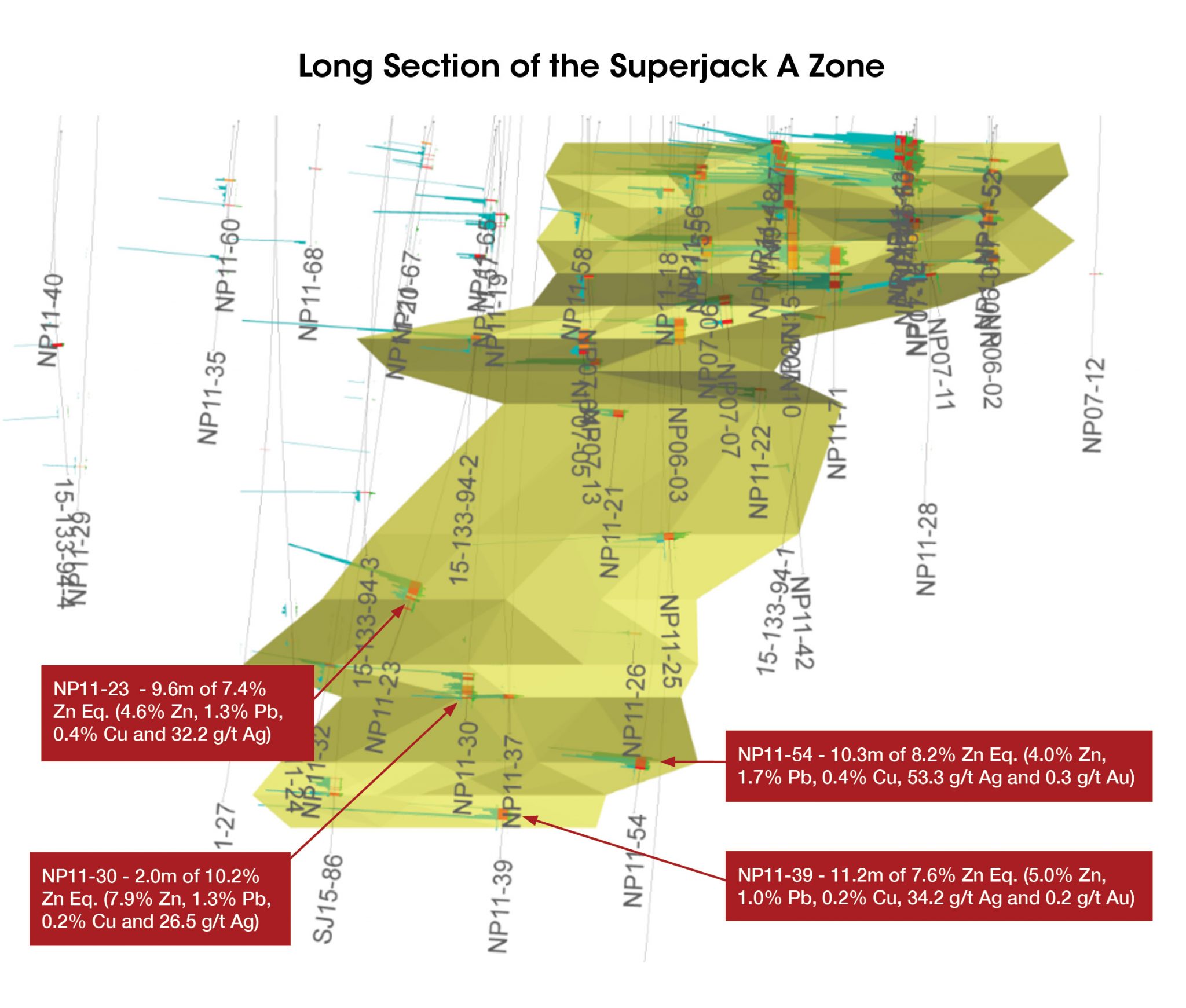
Callinex’ geologists have also developed a theory where the three main zones at Superjack could actually be connected at depth. The only way to find out is to punch some holes in the ground and see what’s there. Whilst Callinex might not necessarily hit the ‘mother lode’ with this first hole, we are really looking forward to see the assay results because it would really be a game changer if the three zones would indeed be connected at depth.
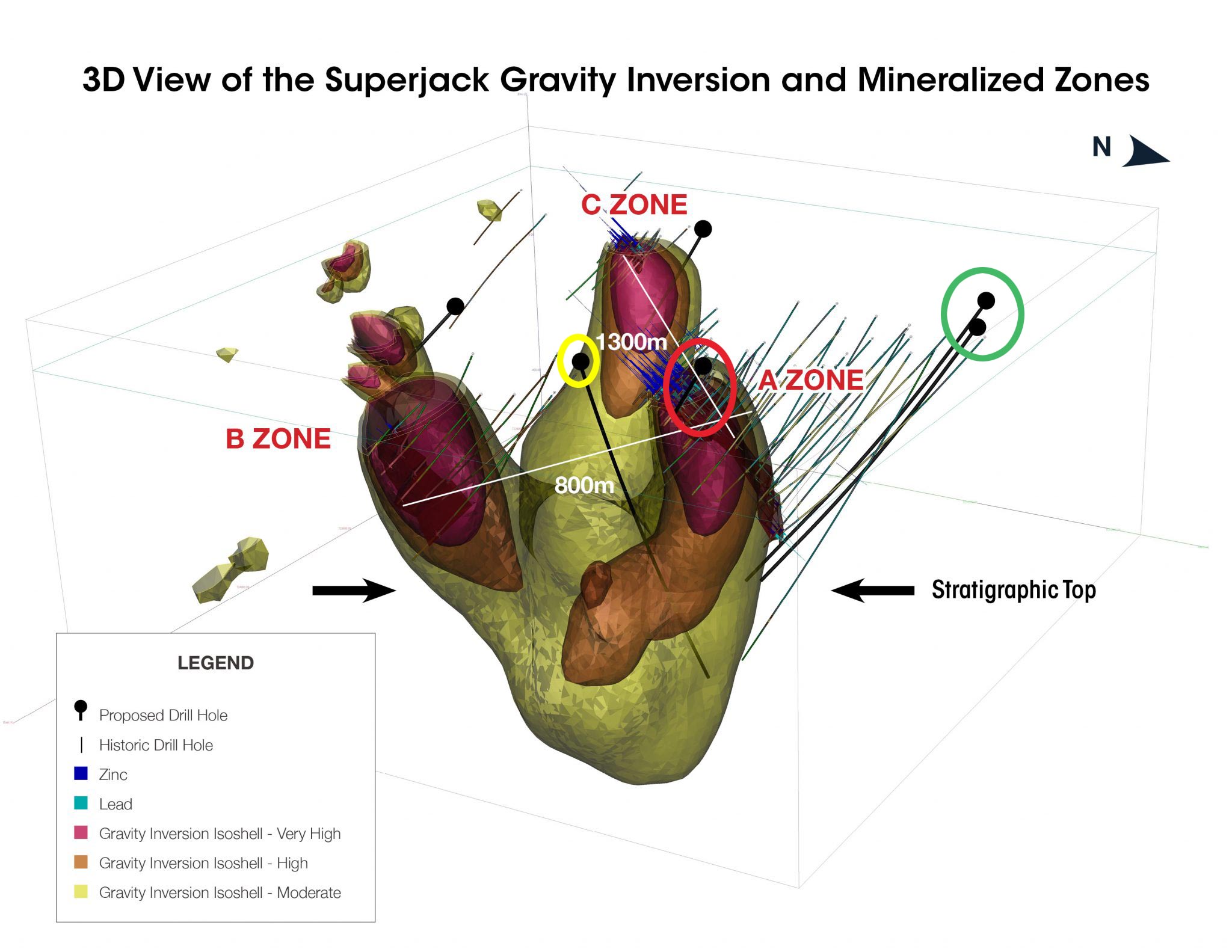
Two other holes will test the B and C zones, but we would also like to highlight the sixth and final hole of this program. This will be a relatively shallow hole (in red), drilled right into the mineralization at the A-zone and will be used for metallurgical purposes. As we explained before, Callinex has reported that data from Dense Media Separation testing has increased the average grade of mineralization at Nash Creek by 80-90% and the company will now investigate whether the same process could be utilized at Superjack.
While results may not be as impressive as at Nash Creek, any significant increase could add to the viability of trucking near-surface mineralization (shown as teal and red in the Long Section of the A Zone) to either its Nash Creek Project located 90 km by road or to a nearby processing facility within 50 km.
Optionality in the Bathurst camp could be key
For now, Callinex Mines is advancing Nash Creek and Superjack as standalone projects, but it doesn’t have to be this way. As you can see on the map earlier in this report, the projects are located in a region with excellent existing infrastructure including milling and smelting facilities in the (wider) region.
We still think Trevali’s (TV.TO) Caribou mill might be a viable option to process ore from Superjack or Nash Creek. Sure, the distance from Nash Creek is quite long (100 kilometers), but not only is this a perfectly acceptable distance to truck ore, there are two additional arguments to be made why Callinex could perhaps process some of its ore at Caribou.
First of all, whilst Trevali’s mill is able to run at the nameplate capacity of 3,000 tonnes per day, the underground mining operation has had severe difficulties to keep up with the milling rate. As you can see in the next tables, the milling and mining rate are consistently below the 3,000 tonnes per day. Not only does this mean Trevali is missing on its mining rate targets, it also means the mill is working at a sub-optimal level. It looks like there’s a ‘spare’ capacity of 300-500 tonnes per day, and if Callinex Mines would indeed be able to ‘upgrade’ its rock using DMS, we are pretty certain Trevali would be happy to accept mill feed with an average grade of 5%+ zinc and 1% lead.
A second argument that could be made is the location of for instance Callinex’ Nash Creek project, that is located just 25 kilometers from a Glencore-operated (GLEN.L) smelter in Belledune. We would think the trucks delivering the concentrate from Caribou to Belledune are returning empty to the Caribou mine site. The synergy benefit of hauling ore-grade material back to Caribou for processing could be substantial as well and is a scenario which should definitely be investigated.
Let us be clear: as far as we know, there are no discussions between Callinex Mines and Trevali Mining ongoing, as Callinex still has to develop its own properties to a more advanced stage, but it certainly isn’t an option we would exclude as Trevali is currently hunting for smaller bolt-on acquisitions to secure mill feed for Caribou. It is also worth considering that open pit deposits, such as those held by Callinex, offer more flexibility for accessing ore/securing mill supply than underground operations, such as those held by Trevali.
On top of that, Osisko Metals (OM.V) could also ‘heat things up’ in the Bathurst mining camp. It sounds like Osisko is still in the process of securing projects and properties, but knowing the reputation of the Osisko-guys they will have massive exploration plans for the camp. Should they be successful, we would expect Osisko to build its own mill as well, which could be a second potential processing facility for Callinex’ ore. Osisko is in the midst of raising +$25 million to deploy in the Bathurst camp.
Long story short, there still are a lot of moving parts in New Brunswick, and you should definitely keep an eye on Trevali’s and Osisko’s progress in the mining camp.
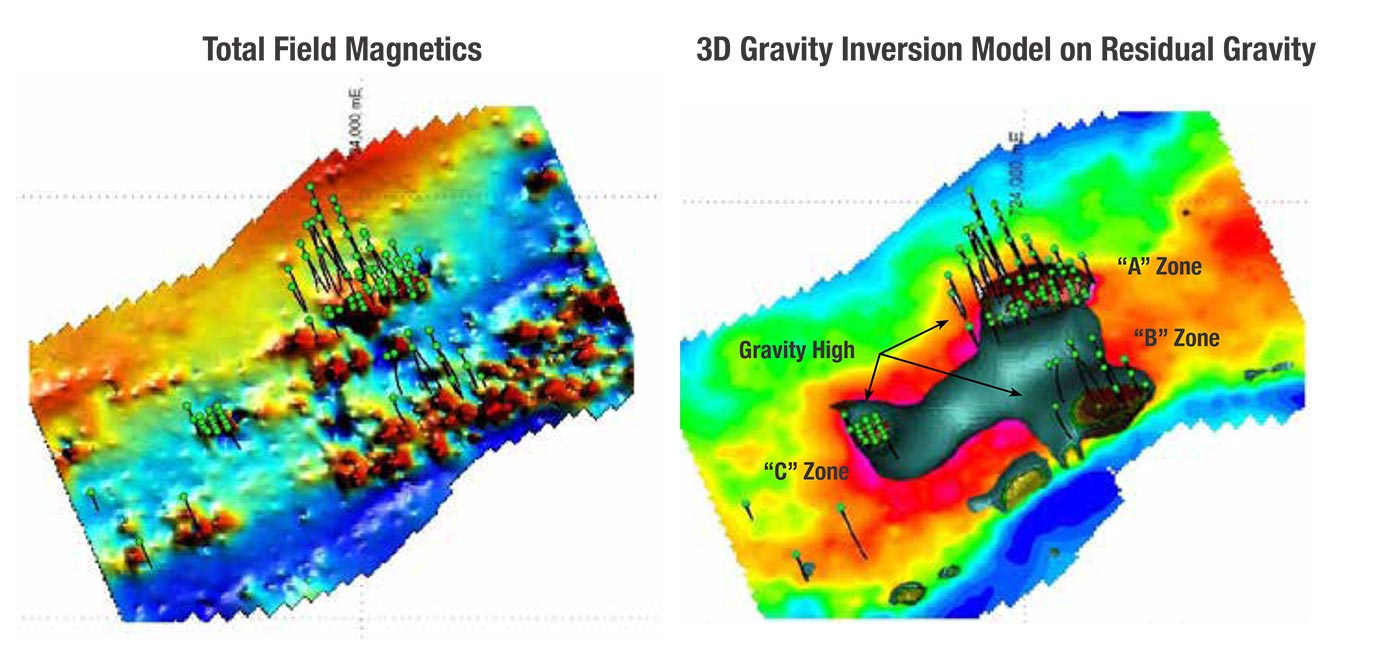
Conclusion
Callinex Mines should receive more attention throughout the summer and fall as it’s making progress on its more advanced zinc projects in the Bathurst camp as it will be easier for the market to understand the progress made to expand an existing resource. By unlocking the area north of the existing Nash Creek resource, Callinex has a really good shot at adding tonnes to the resource to reach the critical mass to develop Nash Creek as a standalone project. With that said, it may turn out that toll milling still offers a superior return to Callinex depending on available mill capacity within the camp.
Again, while you shouldn’t expect an imminent resource update, Callinex is focused on expanding the deposit in advance of a Preliminary Economic Assessment scheduled within the next nine months. In order for Callinex to achieve this goal it will have to complete additional holes to define the limits of mineralization and complete tighter spaced drilling.
With Trevali and Osisko Metals getting really active in the Bathurst mining camp, Callinex’ star will very likely shine bright as well as the zinc market continues to experience a severe supply deficit.
Disclosure: Callinex Mines is a sponsoring company, we have a long position. Please read the disclaimer
